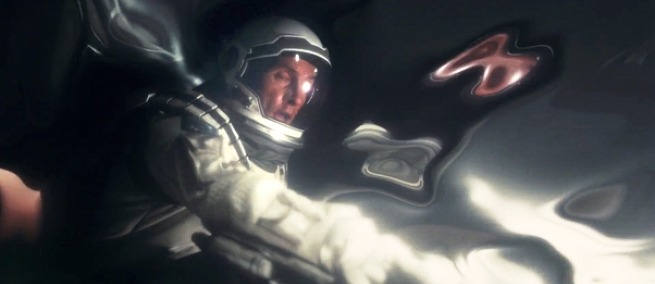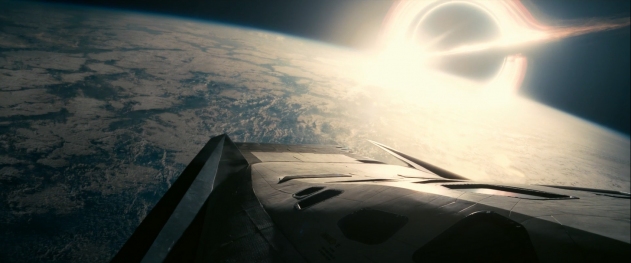
Since Christopher Nolan’s INTERSTELLAR was released in 2014, scientists have listened to the sound of a black hole and detected gravitational waves emitting from two black holes colliding. In 2016, the Laser Interferometer Gravitational-Wave Observatory (LIGO) recorded the sound of two black holes that collided at the speed of light: the infamous chirp. “A black hole is a place in the universe where the gravitational field has become so extreme that once you enter, you can never leave again,” cosmologist and author Sean Carroll told Science & Film. Theoretically, an astronaut inside of one would “be pulled down to a point of infinite density—a singularity—and be crushed.” The black hole Christopher Nolan depicts has waves, emitting from the center, which warp the surrounding interstellar space.
INTERSTELLAR takes place in space where astronauts are searching for a new home for humankind; climate change has rendered Earth uninhabitable. The spacecraft’s crew finds promising planets near a black hole called Gargantua, and the pilot (Cooper, played by Matthew McConaughey) jettisons from the craft into Gargantua. “If it’s a very big black hole, you might not even notice you were inside, at first. There might be lots of time before you hit that singularity,” Carroll said. To be precise, “the process you undergo along the way is called spaghettification. If you’re falling in head first, the gravitational pull on your head is bigger than on your feet, because your head is closer. So your head gets pulled away from your feet, so you get turned into a thin piece of spaghetti before you’re torn apart.” Improbably, in INTERSTELLAR Cooper survives.

The Museum of the Moving Image will screen INTERSTELLAR on August 18, 19, and 20 in 70mm. Stanley Kubrick’s 2001: A SPACE ODYSSEY, which debatably also features a black hole, will screen in August in 70mm as well.